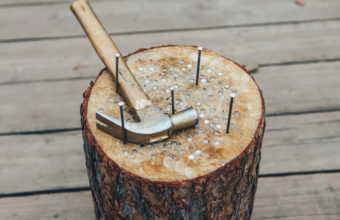After stump grinding, the tree roots typically undergo a process of decomposition and decay. Stump grinding involves the use of heavy machinery to grind the stump down below ground level, effectively removing the visible portion of the tree stump. The roots of the tree often remain in the soil.
Once the stump has been ground down, the roots are left in the ground to decompose naturally over time. Depending on the size and type of tree, as well as environmental factors such as soil composition and moisture levels, the decomposition process can take months to several years.
During decomposition, microorganisms in the soil break down the organic matter of the roots, turning them into nutrients that enrich the soil. Over time, the roots will decay and eventually disappear, leaving behind empty spaces in the soil.
In some cases, particularly with larger or more extensive root systems, there may be remnants of the roots left in the soil for longer periods. These remnants will continue to break down over time until they are fully decomposed.
While stump grinding effectively removes the visible portion of the stump, it may not completely eradicate the roots, especially if they are deep or extensive. In some cases, additional measures such as root removal or chemical treatments may be necessary to fully eliminate the root system.






